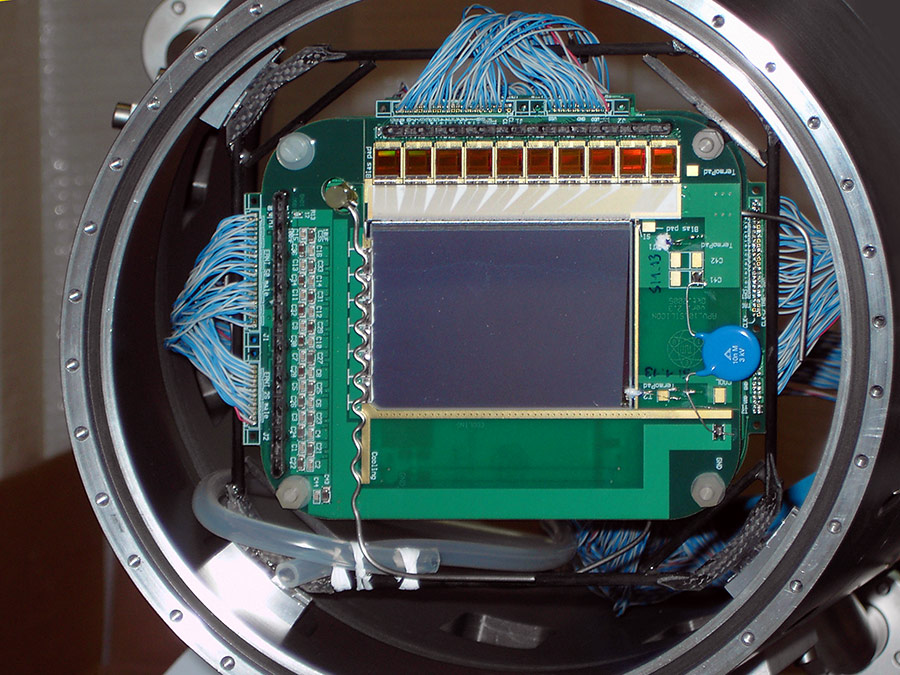New result for the polarizability of pions supports standard model
Precision measurement for the strong interaction

Everything we see in the universe is made up of tiny fundamental particles called quarks and leptons. The building blocks of the nuclei of elements, the protons and neutrons, are in turn made up of three quarks. For example, a gold nucleus consists of 79 protons and 118 neutrons. Darting between the protons and neutrons in a nucleus are pions, which mediate the strong force that binds the nucleus together.
These pions comprise a quark and an antiquark, themselves tightly bound by the strong force. The extent to which these two constituents can be removed from each other is a direct measure of the strength of the binding force between them and thus of the strong interaction.
Extremely strong electric field
To measure this deformability of the pions – physicists refer to it as polarizability – the COMPASS experiment shot a beam of pions at a nickel target. As the pions approach the nickel nuclei at an average distance of merely twice the radius of the particles themselves they experience the very strong electric field of the nickel nuclei, which causes them to deform and change their trajectory, emitting a light particle in the process. The researchers determined the polarizability by measuring this photon and the deflection of the pion for a large sample of 63,000 pions.
The result shows that a pion is far less deformable than one thousandth of its volume. "The experiment is – despite the high particle energies at CERN – a big challenge," says Professor Stephan Paul from Chair E18 of the TUM Physics Department and coordinator of the Cluster of Excellence Origin and Structure of the Universe. "The effect of the pion polarizability is tiny, highlighting the internal force of the pion."
Results correct earlier measurements
The pion’s polarizability has baffled scientists since the 1980s, when first measurements appeared to be at odds with the theory. "The theory of the strong interaction is one of the cornerstones of our understanding of nature at the level of fundamental particles," says Dr. Jan Friedrich, scientist at Chair E18 of the TUM Physics Department and member of the Excellence Cluster Universe, who was in charge of data analysis in the COMPASS collaboration. "The good agreement of today’s result with the theory is thus of great importance."
The COMPASS experiment has been running since 2002 at the Super Proton Synchrotron (SPS), the second largest accelerator at CERN. The collaboration includes about 220 physicists from 13 countries. In Germany, the universities in Bielefeld, Bochum, Bonn, Erlangen-Nürnberg, Freiburg, Mainz and Munich are involved, as well as the Technische Universität München.
In Germany the research was supported by the German Ministry for Education and Research (BMBF), the European Union’s research program FP7 and the German Research Foundation (DFG) via Cluster of Excellence Origin and Structure of the Universe.
Publication:
Measurement of the charged-pion polarizabilty – The COMPASS Collaboration
Phys. Rev. Lett. 114, Feb. 13, 2015
Contact:
Prof. Dr. Stephan Paul
Technische Universität München
Department of Physics, Chair E18
James-Franck-Str. 1, 85748 Garching, Germany
Tel. +49 89 289 12571 – E-Mail – Internet
PD Dr. Jan Friedrich
Technische Universität München,
Department of Physics, Chair E18
James-Franck-Str. 1, 85748 Garching, Germany
Tel. +49 89 289 12586 – E-Mail